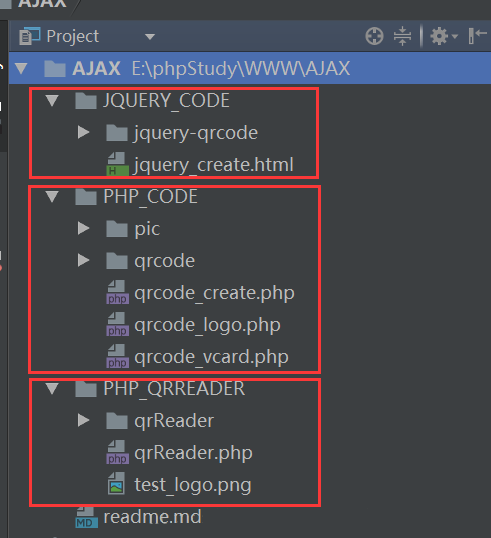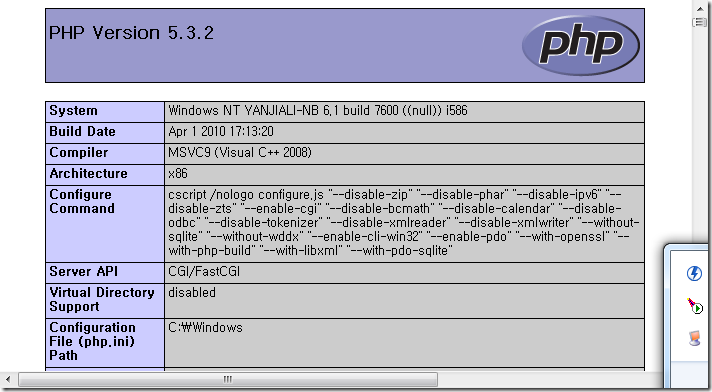PHP的Yii框架中YiiBase入口类的扩展写法示例
通过yiic.php自动创建一个应用后,入口文件初始代码如下:
<?php
// change the following paths if necessary
$yii=dirname(__FILE__).'/../yii/framework/yii.php';
$config=dirname(__FILE__).'/protected/config/main.php';
// remove the following lines when in production mode
defined('YII_DEBUG') or define('YII_DEBUG',true);
// specify how many levels of call stack should be shown in each log message
defined('YII_TRACE_LEVEL') or define('YII_TRACE_LEVEL',3);
require_once($yii);
Yii::createWebApplication($config)->run();
其中第三行引入了一个yii.php的文件,这个可以在yii核心目录里的framework/下找到,这个文件中定义了一个Yii类,并且继承了YiiBase类。
代码如下
require(dirname(__FILE__).'/YiiBase.php');
/**
* Yii is a helper class serving common framework functionalities.
*
* It encapsulates {@link YiiBase} which provides the actual implementation.
* By writing your own Yii class, you can customize some functionalities of YiiBase.
*
* @author Qiang Xue <qiang.xue@gmail.com>
* @package system
* @since 1.0
*/
class Yii extends YiiBase
{
}
而
Yii::createWebApplication
这个方法实际上是在YiiBase父类中定义的,所以,Yii为我们预留了扩展的可能。我们只需要在yii.php中添加我们想要扩展的方法即可,在项目中直接使用 Yii::方法名() 调用。
为了将项目代码和核心目录完全分离,我个人觉得在项目目录下使用另外一个yii.php来替代从核心目录中包含yii.php更加好。
这里我用了更加极端的方法,我直接将yii这个类定义在了入口文件,并扩展了一个全局工厂函数 instance()方法,请看代码:
<?php
// change the following paths if necessary
$yii=dirname(__FILE__).'/../yii/framework/YiiBase.php';
$config=dirname(__FILE__).'/protected/config/main.php';
// remove the following lines when in production mode
defined('YII_DEBUG') or define('YII_DEBUG',true);
// specify how many levels of call stack should be shown in each log message
defined('YII_TRACE_LEVEL') or define('YII_TRACE_LEVEL',3);
require_once($yii);
//扩展基类
class Yii extends YiiBase{
/**
* 全局扩展方法:工厂函数
* @param type $alias 类库别名
*/
static function instance($alias){
static $_class_ = array();
$key = md5($alias);
if(!isset($_class_[$key])){
$_class_[$key] = self::createComponent($alias);
}
return $_class_[$key];
}
}
Yii::createWebApplication($config)->run();
这个类是在最后一行Yii::createWebApplication()之前定义的,以保证Yii类能正常使用(不要把这个类放在文件末尾,会出错。)
在项目中任何地方,使用$obj = Yii::instance($alias);去实例化一个类,并且是单例模式。
YiiBase中的两个比较重要的方法 (import,autoload)
然后看看YiiBase中的import方法就知道这些静态变量是干嘛用的了:
/* Yii::import()
* $alias: 要导入的类名或路径
* $forceInclude false:只导入不include类文件,true则导入并include类文件
*/
public static function import($alias, $forceInclude = false){
//Yii把所有的依赖放入到这个全局的$_imports数组中,名字不能重复
//如果当前依赖已经被引入过了,那么直接返回
if (isset(self::$_imports[$alias])) {
return self::$_imports[$alias];
}
//class_exists和interface_exists方法的第二个参数的值为false表示不autoload
if (class_exists($alias, false) || interface_exists($alias, false)) {
return self::$_imports[$alias] = $alias;
}
//如果传进来的是一个php5.3版本的命名空间格式的类(例如:\a\b\c.php)
if (($pos = strrpos($alias, '\\')) !== false) {
//$namespace = a.b
$namespace = str_replace('\\', '.', ltrim(substr($alias, 0, $pos), '\\'));
//判断a.b这个路径是否存在,或者a.b只是alias里面的一个键,调用该方法返回这个键对应的值,比如'email' => realpath(__DIR__ . '/../vendor/cornernote/yii-email-module/email')
if (($path = self::getPathOfAlias($namespace)) !== false) {
$classFile = $path . DIRECTORY_SEPARATOR . substr($alias, $pos + 1) . '.php';
if ($forceInclude) {
if (is_file($classFile)) {
require($classFile);
} else {
throw new CException(Yii::t('yii', 'Alias "{alias}" is invalid. Make sure it points to an existing PHP file and the file is readable.', array('{alias}' => $alias)));
}
self::$_imports[$alias] = $alias;
} else {
self::$classMap[$alias] = $classFile;
}
return $alias;
} else {
// try to autoload the class with an autoloader
if (class_exists($alias, true)) {
return self::$_imports[$alias] = $alias;
} else {
throw new CException(Yii::t('yii', 'Alias "{alias}" is invalid. Make sure it points to an existing directory or file.', array('{alias}' => $namespace)));
}
}
}
if (($pos = strrpos($alias, '.')) === false) // a simple class name
{
// try to autoload the class with an autoloader if $forceInclude is true
if ($forceInclude && (Yii::autoload($alias, true) || class_exists($alias, true))) {
self::$_imports[$alias] = $alias;
}
return $alias;
}
$className = (string)substr($alias, $pos + 1);
$isClass = $className !== '*';
if ($isClass && (class_exists($className, false) || interface_exists($className, false))) {
return self::$_imports[$alias] = $className;
}
if (($path = self::getPathOfAlias($alias)) !== false) {
if ($isClass) {
if ($forceInclude) {
if (is_file($path . '.php')) {
require($path . '.php');
} else {
throw new CException(Yii::t('yii', 'Alias "{alias}" is invalid. Make sure it points to an existing PHP file and the file is readable.', array('{alias}' => $alias)));
}
self::$_imports[$alias] = $className;
} else {
self::$classMap[$className] = $path . '.php';
}
return $className;
}
// $alias是'system.web.*'这样的已*结尾的路径,将路径加到include_path中
else // a directory
{
if (self::$_includePaths === null) {
self::$_includePaths = array_unique(explode(PATH_SEPARATOR, get_include_path()));
if (($pos = array_search('.', self::$_includePaths, true)) !== false) {
unset(self::$_includePaths[$pos]);
}
}
array_unshift(self::$_includePaths, $path);
if (self::$enableIncludePath && set_include_path('.' . PATH_SEPARATOR . implode(PATH_SEPARATOR, self::$_includePaths)) === false) {
self::$enableIncludePath = false;
}
return self::$_imports[$alias] = $path;
}
} else {
throw new CException(Yii::t('yii', 'Alias "{alias}" is invalid. Make sure it points to an existing directory or file.', array('{alias}' => $alias)));
}
}
是的,上面这个方法最后就把要加载的东西都放到$_imports,$_includePaths中去了。这就是Yii的import方法,好的,接下来我们看看autoload方法:
public static function autoload($className, $classMapOnly = false){ // use include so that the error PHP file may appear
if (isset(self::$classMap[$className])) {
include(self::$classMap[$className]);
} elseif (isset(self::$_coreClasses[$className])) {
include(YII_PATH . self::$_coreClasses[$className]);
} elseif ($classMapOnly) {
return false;
} else {
// include class file relying on include_path
if (strpos($className, '\\') === false)
// class without namespace
{
if (self::$enableIncludePath === false) {
foreach (self::$_includePaths as $path) {
$classFile = $path . DIRECTORY_SEPARATOR . $className . '.php';
if (is_file($classFile)) {
include($classFile);
if (YII_DEBUG && basename(realpath($classFile)) !== $className . '.php') {
throw new CException(Yii::t('yii', 'Class name "{class}" does not match class file "{file}".', array( '{class}' => $className, '{file}' => $classFile, )));
}
break;
}
}
} else {
include($className . '.php');
}
} else // class name with namespace in PHP 5.3
{
$namespace = str_replace('\\', '.', ltrim($className, '\\'));
if (($path = self::getPathOfAlias($namespace)) !== false) {
include($path . '.php');
} else {
return false;
}
}
return class_exists($className, false) || interface_exists($className, false); } return true;}
config文件中的 import 项里的类或路径在脚本启动中会被自动导入。用户应用里个别类需要引入的类可以在类定义前加入 Yii::import() 语句。

